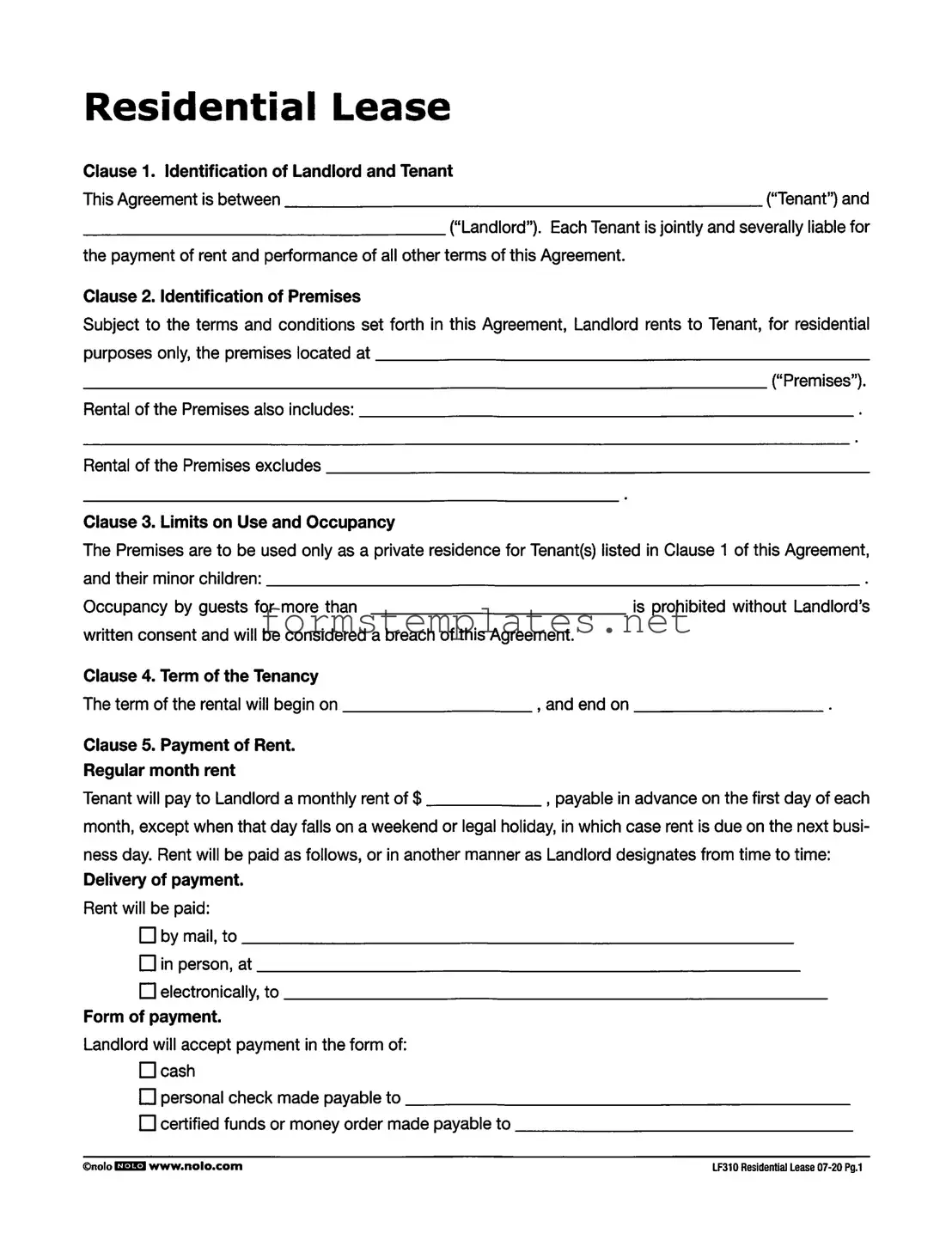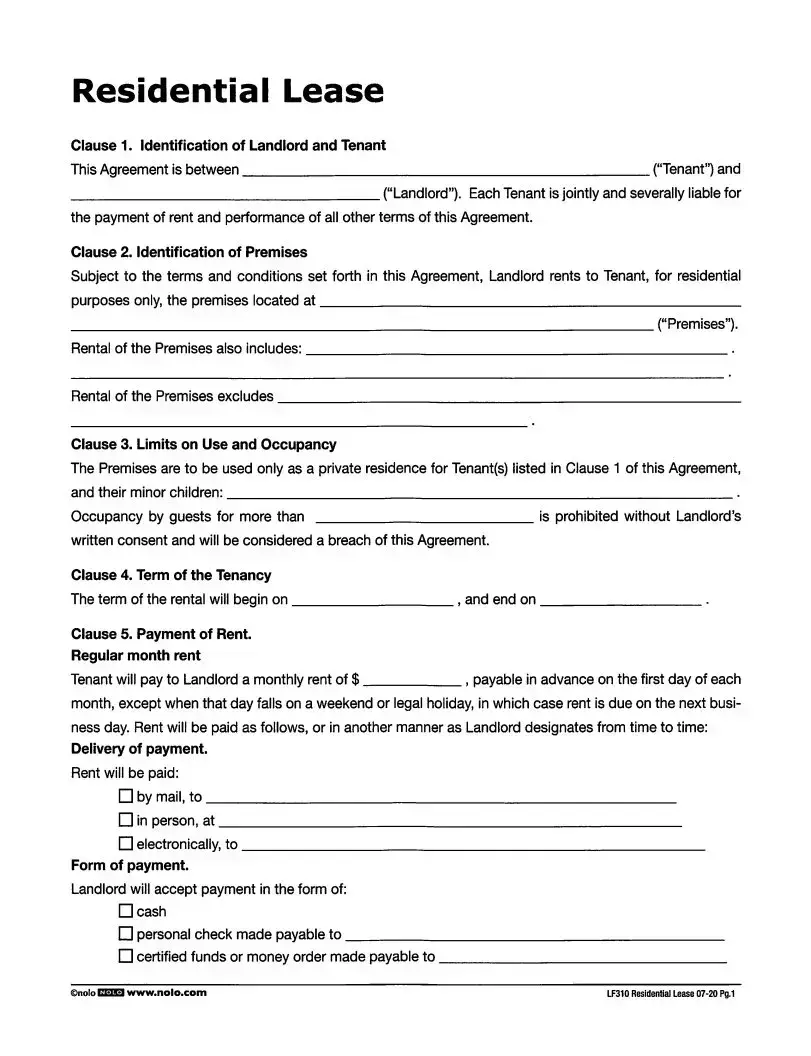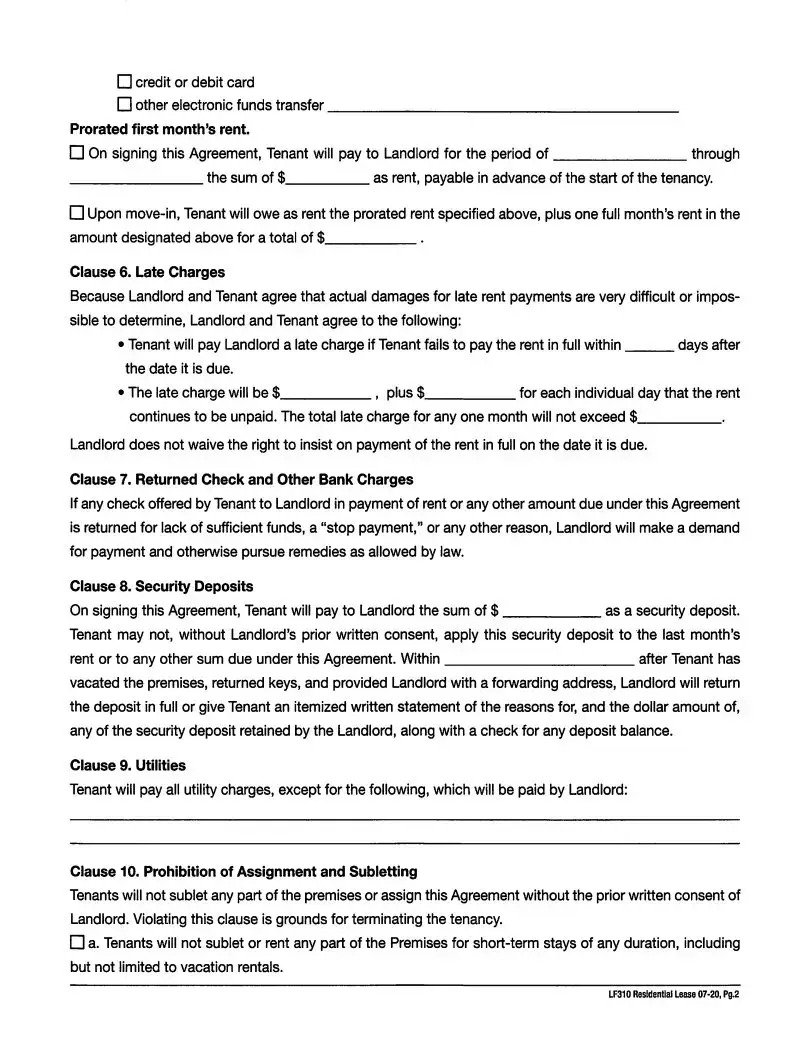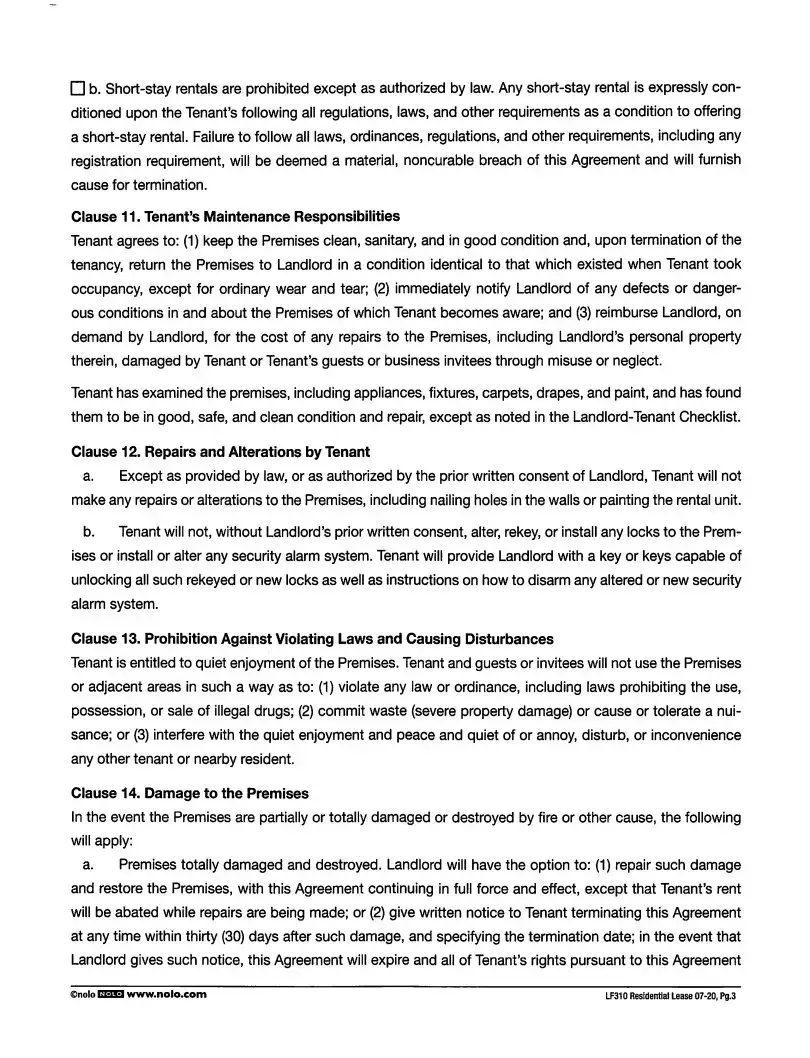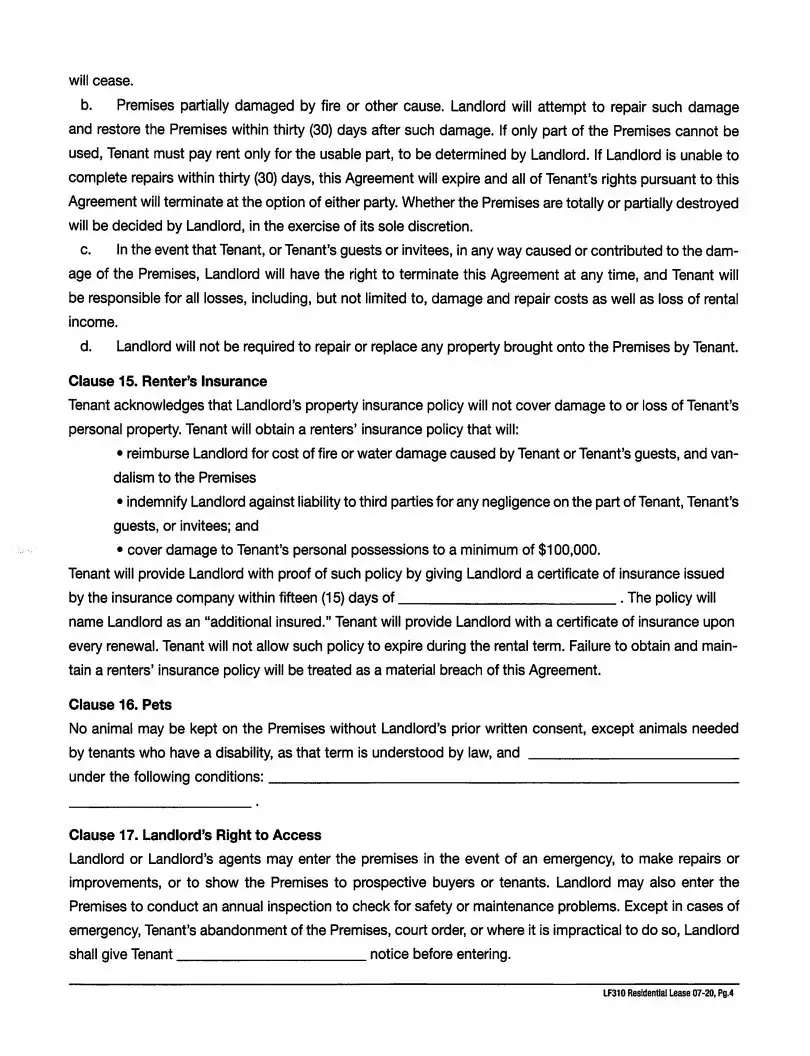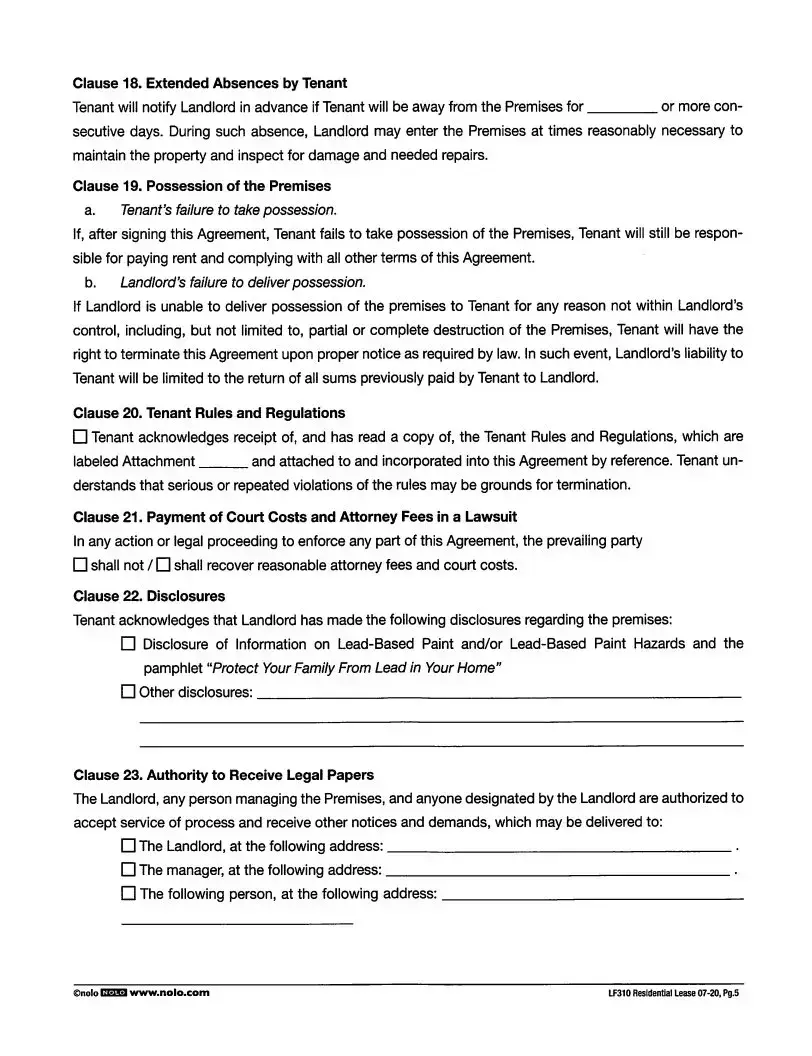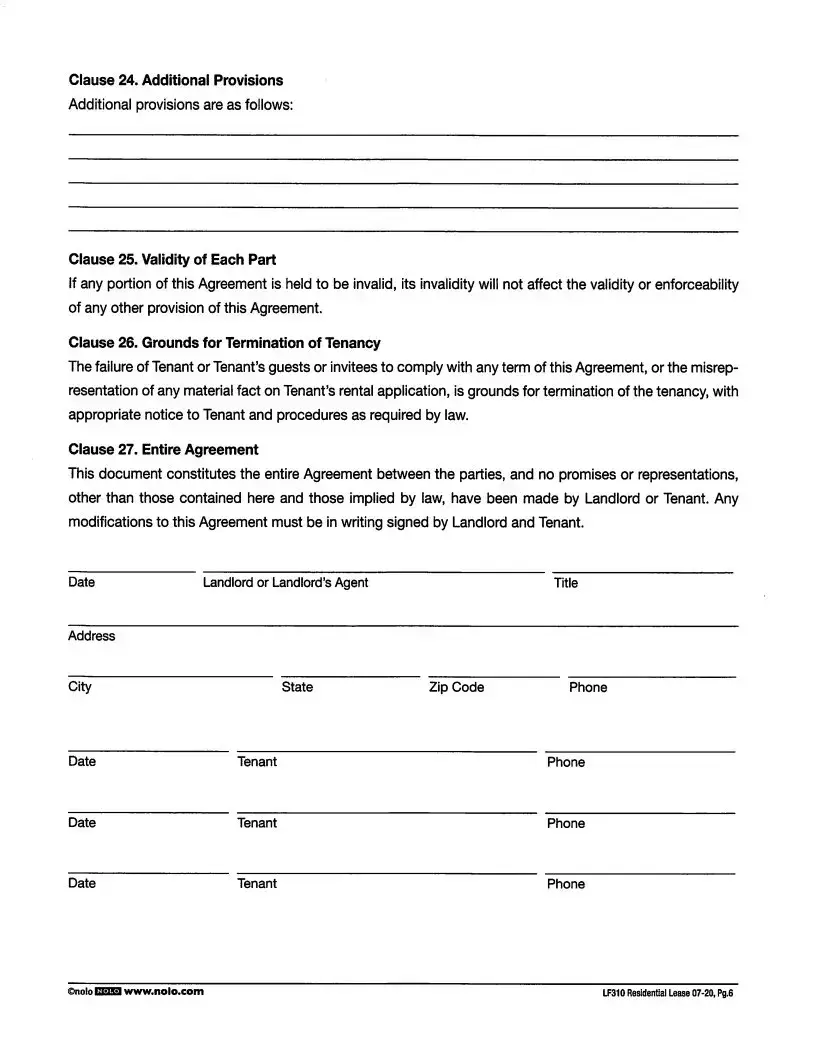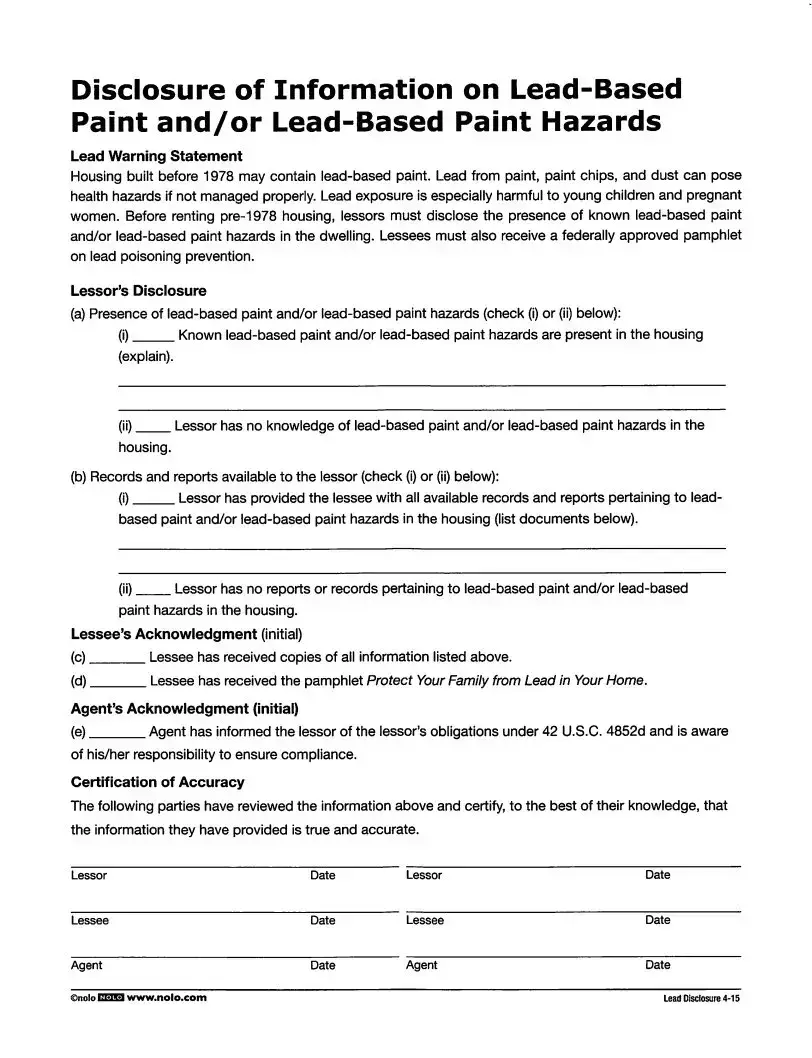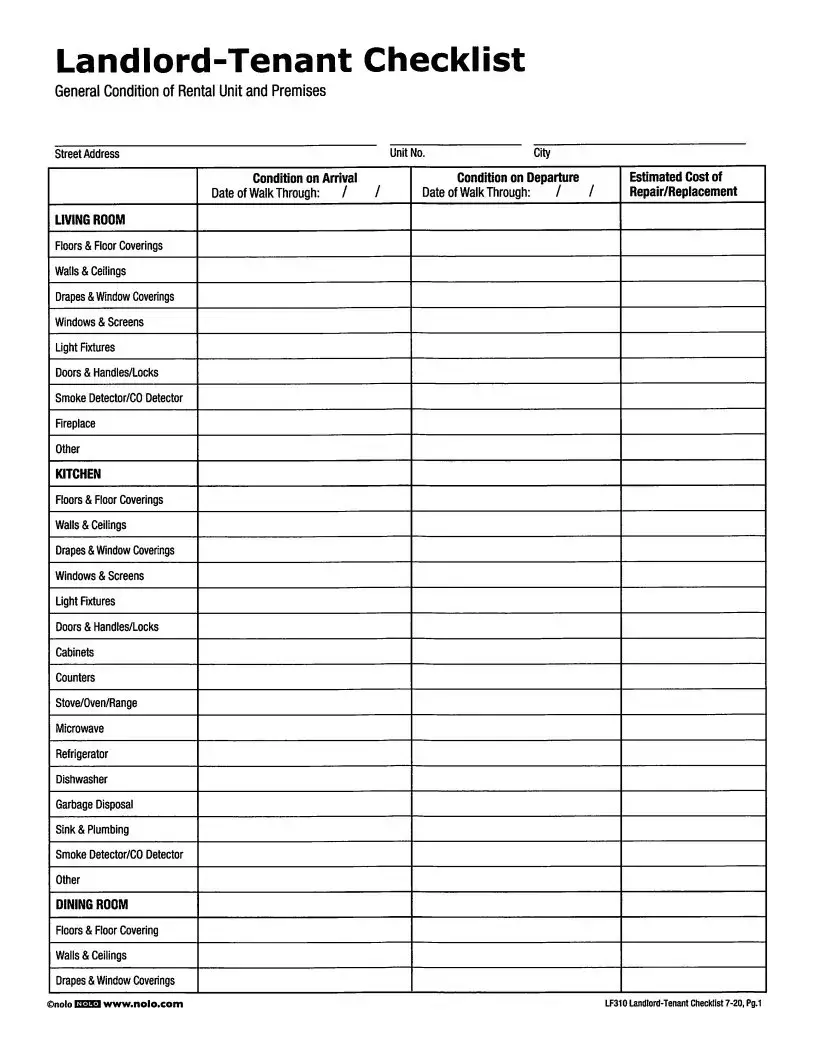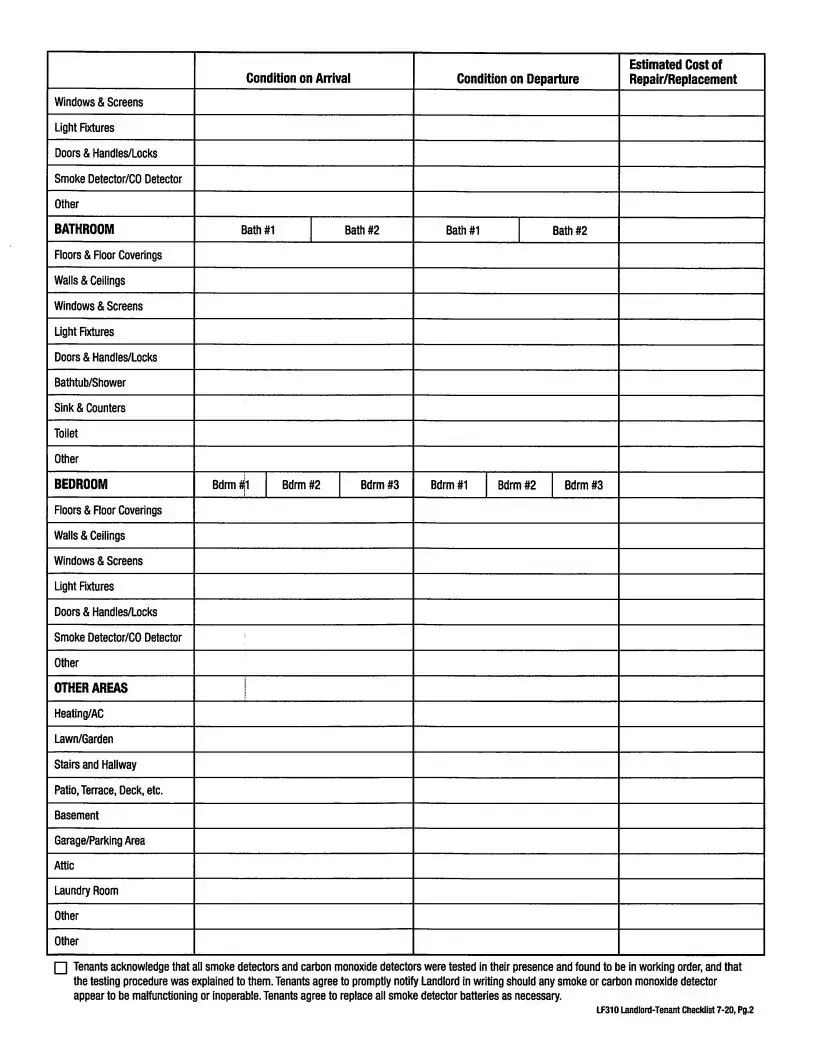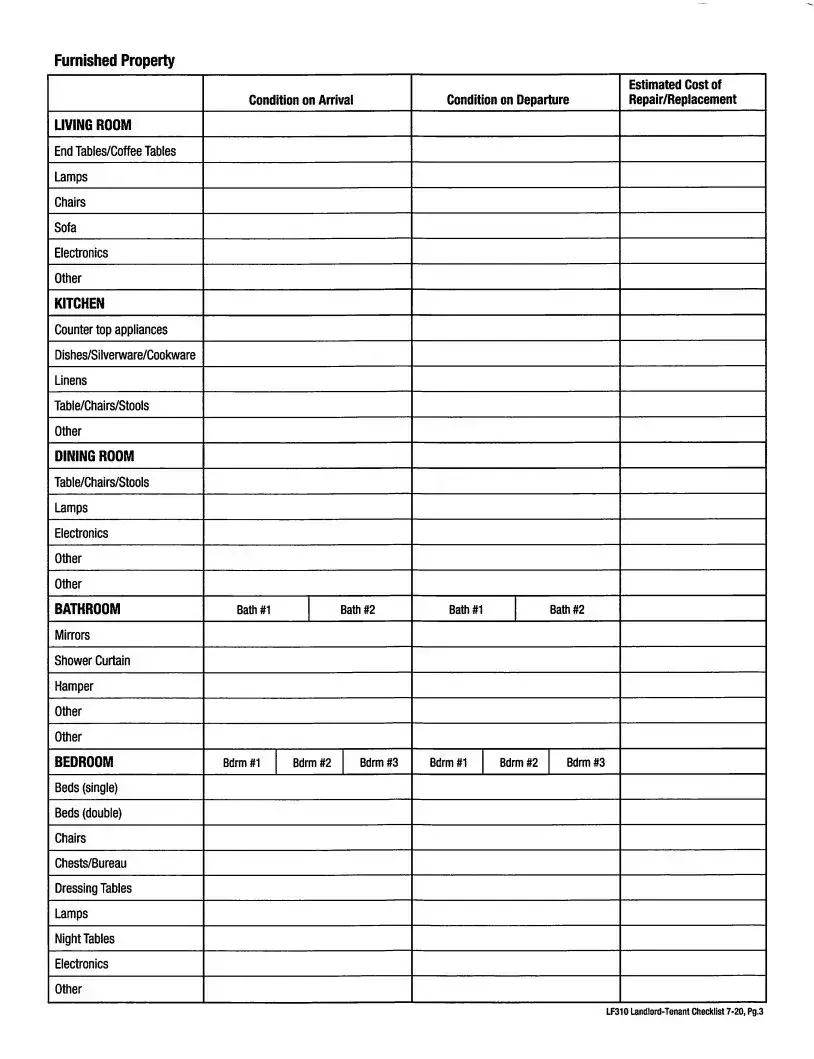The LF310 Residential Lease form is a legal document that outlines the terms and conditions under which a landlord rents a residential property to a tenant. This form specifies details such as the identities of the landlord and tenant, the rental amount, the duration of the lease, and rules regarding the use of the property.
Who is responsible for paying the rent?
According to the LF310 form, each tenant listed in the agreement is jointly and severally liable for the payment of rent. This means that all tenants are responsible for the total rent amount, and the landlord can seek payment from any individual tenant if others do not pay.
How is rent paid?
Rent is typically due on the first day of each month. If this day falls on a weekend or a legal holiday, rent is due on the next business day. Tenants can pay rent in various ways, such as:
-
By mail
-
In person
-
Electronically
The landlord will specify the preferred method of payment in the agreement.
What happens if rent is paid late?
If rent is not paid in full within the specified number of days after it is due, a late charge will apply. The late charge consists of a fixed amount plus an additional fee for each day the rent remains unpaid. However, the total late charge for any one month will not exceed a certain limit set in the agreement.
What is a security deposit?
A security deposit is an amount paid by the tenant to the landlord at the start of the lease. This deposit serves as a financial safeguard for the landlord against potential damages or unpaid rent. Tenants cannot use the security deposit to cover the last month's rent without written consent from the landlord.
Are utilities included in the rent?
Generally, tenants are responsible for paying all utility charges unless the lease specifies otherwise. The LF310 form will outline which utilities, if any, will be covered by the landlord.
Can tenants sublet the property?
Tenants are not allowed to sublet any part of the premises or assign the lease without the landlord's prior written consent. Violating this rule could lead to the termination of the tenancy, so it’s important for tenants to seek approval before making any arrangements to sublet.
